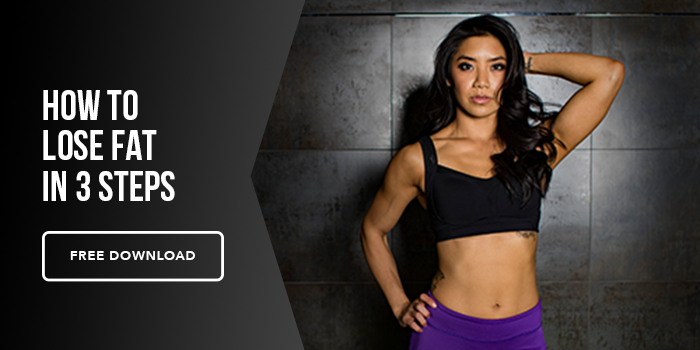Cardio gets a bad wrap as being overused, and improperly utilized. I definitely see most people in the gym relying way too heavily on cardio to hit their goals and not checking in to see if that is even the best tool for the job. I think it’s too easy overall when we begin any journey, to find success with one aspect, and then double and triple down on that one aspect thinking it’s the best and only way to get results. The ironic part is, we develop blinders towards asking ourselves if it is even the best tool for the job anymore.
Cardio as a Sport, or Overall Health Goal
If we’re talking about general cardiovascular health, or cardio as a main function of your sport (running, marathons, obstacle course racing), then the thought process is completely different. Marathon runners of course, are going to have to spend a ton of time building the mileage, and endurance to excel at their sport. I won’t focus on that category, because they likely already have specific routines and programs built out.
If you just want cardio to keep your cardiovascular levels up, then the solution is easy - implement at least 2-3 days of 30 minutes cardio each. Don’t think of that time as being limited to just the gym. Play a game of basketball, go for a swim, find an active hobby, or use that as a way to be active with your kids for 30 minutes outside. Any aerobic movement is great for your heart. The only caveat I’d make is, if you are on the more intense side, just don’t do more than your body is able to recover from.
Cardio As a Tool To Lose Weight
I’m guessing those reading this article are thinking in terms of weight loss. Every other category seems to have pretty clear guidelines on how to implement it. Weight loss however, can be a bit trickier. Should you do it every day? Is it better to sprint on a bike for 45 minutes or go outside for a jog? So for the rest of this article, my focus will be on how to implement cardio into your routine with fat loss in mind.
In general with fat loss, I always advise never having to do more than you have to. As long as we are seeing progress, then our goal should be what’s the least amount of changes we have to make to elicit the most progress. When losing weight, we are trying to shoot for a rate of about 1-2lbs a week depending on your starting body fat levels). If you are already losing 1lb a week with zero cardio, and just a solid 250-500 calorie deficit, then there is no need to implement cardio yet. In fact, I would just keep sticking with that deficit and not including cardio, until you hit a plateau. Once you hit 1-2 weeks in a row where weight loss stalls, only then would I start making changes, and it might not involve your typical cardio.
Increase Your NEAT
If you hit your first plateau, I’d figure out your average weekly step count. Every phone or smartwatch tracks this now so that should be easy. I’d then add 2,000 to whatever that average was. So if my phone told me I average 8,000 a day, I’d start trying to hit 10,000 steps to break through that first plateau. That will get most people out of their plateau.
I would stick to that 10,000 count until again, you hit a plateau, then I’d add another 2,000 steps. I’d keep focusing on adding 2,000 during a plateau until it started becoming cumbersome to consistently hit those steps.
Further Decrease Your Caloric Intake
If you are hitting another roadblock, I’d recommend lowering your intake by another 250-500 calories. I will say, this is where steps 2 and 3 can be very interchangeable to the individual. As we hit plateaus, it’s our body's way of adapting during a diet, to expend less calories to save you from losing weight. It wants to keep you alive. Food and movement are our two tools to further create a bigger deficit to continue the weight loss. It comes down to a matter of preference. Some people would rather keep their calories on the slightly higher side, and let the movement do most of the leg work (in which case I’d say go to step 3. Just realize however, depending on how much weight you want to lose, at some point you will have to lower calories).
Others prefer doing a combination of lowering calories, and then increasing cardio. I prefer the latter, as I find for myself, I don’t like the thought of my days getting taken over by insanely high step counts to a point where I feel like I’m constantly having to move or do cardio to hit my goal when I could simply save some time and just eat a little less.
Incorporate HIIT or Steady State Cardio
Once you are unable to consistently hit your step count, AND are plateauing on the scale, I would tell a client to start doing typical cardio. If you are able and interested, I’d start with 2 days of HIIT cardio. They’ll help further increase that cardio deficit, while taking up less time. If you have injuries that don’t allow for that, or just simply have zero interest, then I’d suggest doing steady state jogging on the treadmill, outside or on an elliptical. This should help much more easily hit your step count goals and continue to create that deficit.
If You Still Haven’t Met Your Goal…
Those 3 steps should get you to your goal. If you find you still haven’t reached your ideal weight, then chances are you need a break from dieting. This is totally okay and most likely necessary especially if you have more than 15-20lbs to lose. Take a 1-2 week break back at maintenance, with your step count cut in half to allow your body to speed up its metabolism and get back to normal. Once your energy comes back, you can go for another 6-12 week diet following the same principles listed above.
Be sure to check out my articles on When is Cardio a Good Idea and NEAT vs. Cardio for Maximum Calorie Burn for more help on using cardio as a tool.






